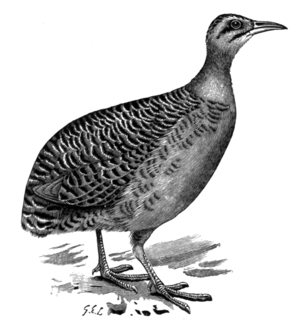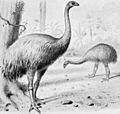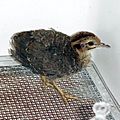Tinamou facts for kids
Quick facts for kids TinamouTemporal range: Miocene to present
|
|
|---|---|
 |
|
| The Great Tinamou, Tinamus major | |
| Scientific classification | |
| Kingdom: | |
| Phylum: | |
| Class: | |
| Superorder: | |
| Order: |
Tinamiformes
Huxley, 1872
|
| Family: |
Tinamidae
G.R. Gray, 1840
|
| Diversity | |
| [[List of Tinamidae species|2 Subfamily, 9 Genera, 47 Species, 127 Subspecies]] | |
A tinamou is one of an family of birds called the Tinamidae. They are the only species within the family. There are 47 species of tinamou in Central and South America. They are one of the most ancient living groups of bird, and are related to the ratites. Generally ground dwelling, they are found in a range of habitats.
Taxonomy and evolution
Of Gondwanan origin, tinamous are related to the ratites. Although the fossil record in South America is poor, the known tinamiform fossil record goes back 10 million years. Together with the ratites, they make up Palaeognathae ("old jaws"), while all other living birds are members of Neognathae ("new jaws"). Unlike the other palaeognaths, tinamous do have a keeled sternum. Like the other palaeognaths, they also have a distinctive palate (thin bony plate at top of mouth).
Recent phylogenetic studies place tinamids as the sister group of Australasian/Oceanian ratites. Those are the (cassowaries, emus, and kiwi). South American ratites (rheas) and African ratites (ostriches) are also related, but more distantly. Tinamous themselves are monophyletic.
Images for kids
-
The moas Dinornis robustus and Pachyornis elephantopus, tinamous' extinct ratite cousins from New Zealand
-
Many of the larger tinamous, like this great tinamou roost in trees at night.
-
Tayras prey on tropical forest tinamous.
See also
 In Spanish: Inambúes o Tinamúes para niños
In Spanish: Inambúes o Tinamúes para niños


















